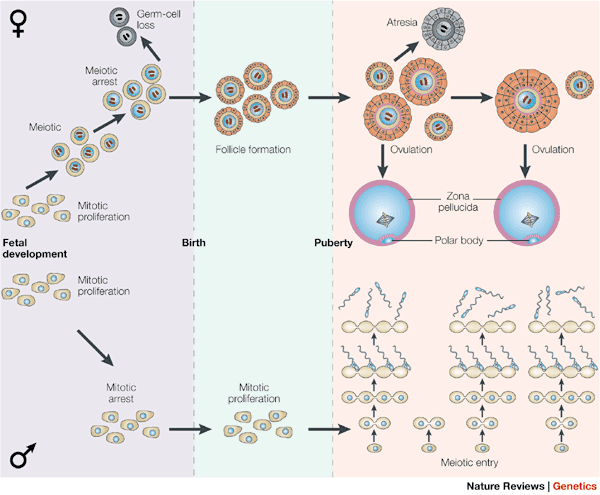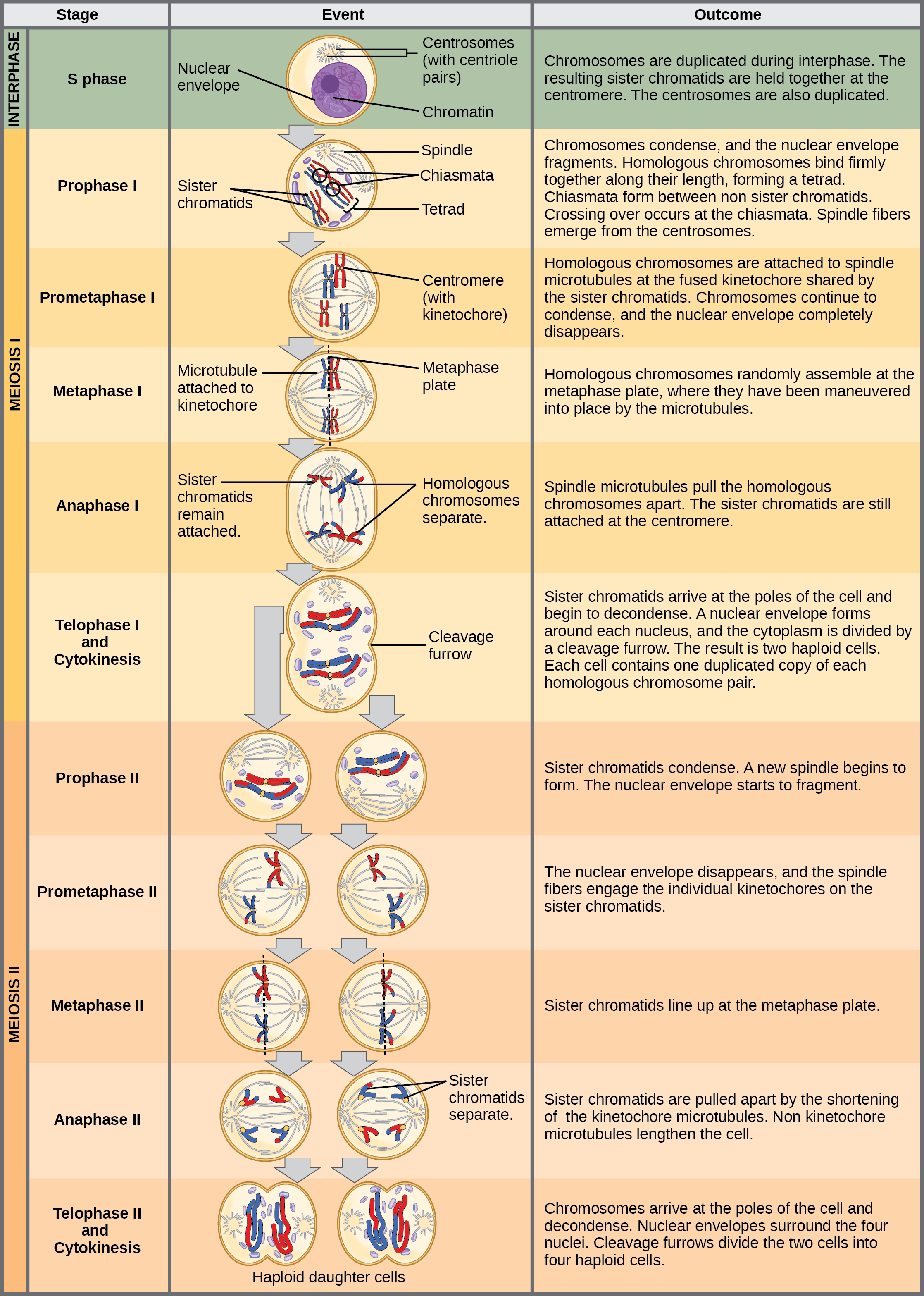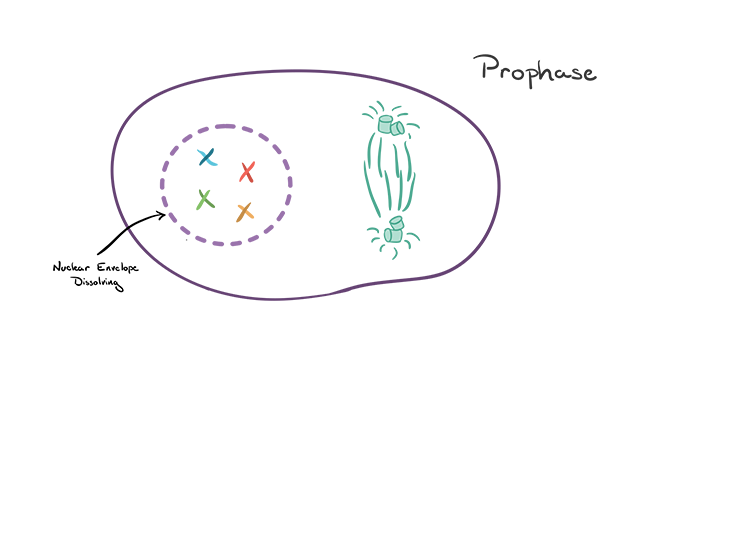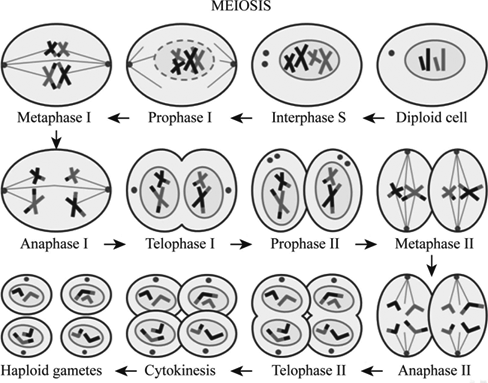55 Awesome A Haploid Cell With Single-stranded Chromosomes Results
A haploid cell with single-stranded chromosomes results Cell Division and Growth. The total number of chromosomes present in a haploid cell is 23.
 Cell Reproduction Mcgraw Hill Education Access Engineering
Cell Reproduction Mcgraw Hill Education Access Engineering
Briefly it consists of two cell divisions in succession and occurs in the following phases.

A haploid cell with single-stranded chromosomes results. These cells are formed after meiotic cell division. This cell plate leads to the formation of cell walls that separate the two daughter cells. In the case of diploid organisms haploid cells would contain one set of chromosomes rather than the standard two sets of homologous chromosomes. A haploid cell with single-stranded chromosomes results
A type of cell division that results in four daughter cells each with half the number of chromosomes of the parent cell as in the production of gametes and plant spores. In this case the nucleus of a eukaryotic cell is only said to be haploid if it has a single set of chromosomes each one not being part of a pair. Haploid is the quality of a cell or organism having a single set of chromosomes. A haploid cell with single-stranded chromosomes results
Organisms that reproduce asexually are haploid. In microbiology a haploid cell is the result of a diploid cell replicating and dividing twice through meiosis. Chromosomes have the same size and shape alleles for the same trait. A haploid cell with single-stranded chromosomes results
Site where crossing over occurs. In sexual reproduction haploid gametes unite in fertilization and become a diploid zygote. Haploid or monoploid is a cell or organism that has just a single copy of each chromosome. A haploid cell with single-stranded chromosomes results
Sexually reproducing organisms are diploid having two sets of chromosomes one from each parent. These cells carry 20 chromosomes express stem cell markers and develop into all germ layers in vitro and in vivo. They are typically responsible for sexual reproduction by producing sperm and ovum. A haploid cell with single-stranded chromosomes results
The haploid cell is a type of cell that has a single set of chromosomes. Here we report the generation of haploid mouse ESC lines from parthenogenetic embryos. Meiosis produces haploid gametes ova or sperm that contain one set of 23 chromosomes. A haploid cell with single-stranded chromosomes results
4 cells with single stranded chromosomes. Haploid Cell -Haploid cells have half the number of chromosomes n as diploid - ie. Prophase I metaphase I anaphase I telophase I interkinesis prophase II metaphase II anaphase II and. A haploid cell with single-stranded chromosomes results
In humans a complete set 2n comprises of 46 chromosomes. Because they have two sets of chromosomes they have double the number of chromosomes as in haploid cells. A haploid cell contains only one complete set of chromosomes. A haploid cell with single-stranded chromosomes results
Begins with a pair of haploid cells with duplicated chromosomes each containing a single set of chromosomes each with its fraternal. But each homologous chromosomes consists of two sister chromatids. The end of Meiosis I results in two haploid cells There is only one full set of chromosomes present because at each pole there is just one of each pair of the homologous chromosomes. A haploid cell with single-stranded chromosomes results
Meiosis Leptotene Characterized by chromatin condensation appearance of chromosomes Sister chromatids condense and become connected with each other by meiosis-specific cohesion complexes Rec8p Pairing of homologous chromosomes maternal and paternal A process in which chromosomes actively search for each other After finding their mates they align side by side with a. We also developed a reversible mutagenesis protocol that allows saturated genetic recessive screens and results in homozygous alleles. As mentioned a haploid cell is one that only contains one set of chromosomes. A haploid cell with single-stranded chromosomes results
When two gametes an egg and a sperm fuse the resulting zygote is once again diploid with the mother and father each contributing 23 chromosomes. These haploid cells are common in gametes. Process by which the number of chromosomes per cell is cut in half through the separation of homologous chromosomes in a diploid cell Homologous term used to refer to chromosomes that each have a corresponding chromosome form the opposite sex parents. A haploid cell with single-stranded chromosomes results
The stages of meiosis are fundamentally the same in both sexes. In humans only their egg and sperm cells are haploid. Meiosis results in the formation of. A haploid cell with single-stranded chromosomes results
By extension a cell may be called haploid if its nucleus has one set of chromosomes and an organism may be called haploid if its body cells somatic cells have one set of chromosomes per cell. These haploid daughter cells have half the number of chromosomes as the parent cell and are not genetically identical to the parent cell. This same pattern but not the same number of chromosomes occurs in all organisms that utilize meiosis. A haploid cell with single-stranded chromosomes results
These cells are formed after mitotic cell division. Sperm and ova containing only one set or n number of chromosomes and autosomal or somatic cells are diploid cells containing 2n number of chromosomes. Gametes or germ cells are haploid cells example. A haploid cell with single-stranded chromosomes results
Process in which homologous chromosomes exchange portions of their chromatids during meiosis. At the end of meiosis and cytokinesis four haploid cells are produced from a single diploid cell. -Haploid cells are a result of the process of meiosis a type of cell division in which diploid cells 2N divide to give rise to daughter cells 2 X 1N. A haploid cell with single-stranded chromosomes results
Haploid cells are cells that contain half of the number of chromosomes that are usually found per cell of an organism. A haploid cell with single-stranded chromosomes results. The number of chromosomes n differs in different organisms. A haploid cell with single-stranded chromosomes results
Centromeres split so single stranded chromosomes are pulled back towards the centriolespoles. Results in 4 haploid cells by seperating the 2 cells with double stranded chromosomes. This can be from either a male or female in the species and these exist so that the correct number of chromosomes will pass to the next generation. A haploid cell with single-stranded chromosomes results
 Stages Of Meiosis And Sexual Reproduction Learn Science At Scitable
Stages Of Meiosis And Sexual Reproduction Learn Science At Scitable
 Does Chromosome Duplication Also Occur In Meiosis If Yes Then Why Are Gametes Haploid In Number Quora
Does Chromosome Duplication Also Occur In Meiosis If Yes Then Why Are Gametes Haploid In Number Quora

 5 Important Difference Between Haploid And Diploid Cells In Tabular Form Core Differences
5 Important Difference Between Haploid And Diploid Cells In Tabular Form Core Differences
 Cell Continuity Biology Leaving Cert 2 3 Cell Continuity Ppt Video Online Download
Cell Continuity Biology Leaving Cert 2 3 Cell Continuity Ppt Video Online Download
 How Are Haploid And Diploid Cells Produced Quora
How Are Haploid And Diploid Cells Produced Quora
 Unit 7 Cellular Reproduction Ppt Download
Unit 7 Cellular Reproduction Ppt Download
 Name Mitosis Vs Melosis Period Date Question 1 Concept Map Comparing Mitosis And Meiosis Use Homeworklib
Name Mitosis Vs Melosis Period Date Question 1 Concept Map Comparing Mitosis And Meiosis Use Homeworklib
Http Pams Pasd Com Cms One Aspx Portalid 435560 Pageid 36765670
 The Process Of Meiosis Openstax Biology 2e
The Process Of Meiosis Openstax Biology 2e
 Dna Part V Meiosis Ppt Download
Dna Part V Meiosis Ppt Download
 Solved Click And Drag Each Label To Identify Which Phase Chegg Com
Solved Click And Drag Each Label To Identify Which Phase Chegg Com
 Biol2060 Sexual Reproduction Meiosis And Genetic Recombination A
Biol2060 Sexual Reproduction Meiosis And Genetic Recombination A

 Meiosis Sexual Reproduction Ppt Download
Meiosis Sexual Reproduction Ppt Download
 Mitosis Article Cellular Division Khan Academy
Mitosis Article Cellular Division Khan Academy
 Meiosis Ii Separating The Chromatids Ppt Download
Meiosis Ii Separating The Chromatids Ppt Download
 Meiosis I Biology For Majors I
Meiosis I Biology For Majors I
 Definition Of Meiosis And Mitosis Chegg Com
Definition Of Meiosis And Mitosis Chegg Com
